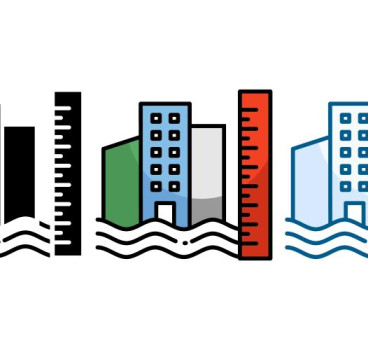PUTTING SUSTAINABILITY AT THE CORE OF ROOF INSULATION DESIGN
The construction industry is the UK's biggest consumer of natural resources. The finding was revealed as part of a study by Waste Management and Reprocessors (WRAP) which works with businesses, local authorities and governments to improve recycling collections and reduce waste writes James Wilkinson, Design Team Manager at Gradient.
According to WRAP, the building sector uses 400 million tonnes of material each year, resulting in an annual production of 100 million tonnes of waste. The data does nothing to assuage the notion that the construction industry's renowned reliance on traditional practices and techniques is to the detriment of its environmental performance. The tide is turning though, and the building supply chain is bolstered by manufacturers and the like making sustainability core to their offering. Gradient is one such company.
As a turnkey service supplier of flat and tapered roof insulation, each element of Gradient's provision – from the initial client contact, to site surveys and the bespoke creation and delivery of the product itself – is aimed at minimising waste. Such is the forensic detail applied to the systems we manufacture; the amount of insulation we provide will be precisely what is needed to meet project requirements – no more, no less. This not only minimises material waste, it makes for a more cost-effective installation, which is in itself has sustainable benefit.
Call-off duty
As well as avoiding over-specifying materials, Gradient offers a call-off delivery service for customers. This allows bulk orders to be delivered over a period of time. Providing installers with the right amount of product when needed significantly reduces instances of unused materials being left around site to deteriorate. This ‘call-off' system is of particular benefit in city-based construction projects where space is likely to be severely limited, and having spare materials deposited about a site poses an increasing health and safety risk, as well as accruing a costly build-up of waste.
On congested sites with minimal storage room, phased delivery times also protect against the far from ideal scenario of using roofs as a convenient facility to stow unrequired items. For waterproof installers with little site space in which to manoeuvre, but with a 10,000m2 at their disposal, it's a temptation few would find easy to resist. But leaving materials unsecure and exposed upon a roof risks damaging the items themselves, as well as the roof they are designed to protect. It also imperils other areas of a site due to the potential for materials or debris to be blown from the roof. Such an outcome could not only cause serious injury to a passing trades person or member of the public, it would likely lead to project delay and tarnishing of the reputation of the company involved.
Building sustainability into design
Putting sustainability at the core of tapered insulation and roof design in practical terms means initiating processes which make a difference to waste generation. At Gradient, for example, our technicians try to minimise the number of different falls on a roof. This uniform approach to design allows insulation boards unused in one area of a roof to be installed elsewhere within the application. This recycling of materials comes at zero cost to the insulation system's overall performance, but does spare high-performance boarding from being cast to the skip.
Sustainability is endemic within Gradient's culture. Hence in terms of the design process, our technical teams are not only focused on creating a flat or tapered roofing insulation that is specific to a client's requirements and built to last the lifespan of a building, they will challenge themselves to optimise a project's environmental performance. The off-site manufacture of systems within a controlled environment is a major contributor to our sustainably-favourable output. For example, our single-layer tapered insulation systems arrive on site pre-bonded, thus eliminating the need for installers to adhere the boards themselves, a process which could be delayed by exterior elements causing moisture or debris to contaminate the glue, rendering it unusable. Again, seemingly minor issues such as this can parlay to increase costs which would otherwise by offset by taking a more sustainable approach to the job in hand.
Don't let sustainable working practices go to waste
By creating the opportunity for waste – which also incurs expense during its transportation and safe disposal – those involved in the building supply chain throw away the chance of driving down project costs that are ultimately borne by the customer. The environment also suffers, which in the long-term affects us all if we are denied the chance to breathe cleaner, less-polluted air. It's a situation that can be fixed if all strands of the construction industry were, like Gradient, to go one step further in striving to reduce their carbon footprint.
Additional Blogs

When fire breaks out who really knows the system
The story that caught my attention recently wasn’t about fire growth or building loss, it was about confusion. Specifically, the confusion faced by the fire service when arriving at buildings...
Read moreThe design and development of Nexus Layouts
When Zentia set out to rethink the suspended ceiling, the brief was clear: deliver greater creative freedom for designers, more distinctive visual identity for clients, and a solution that could keep...
Read more

The 100-year construction project or why longevity Is the new sustainability
For decades, the construction sector has defined sustainability through metrics such as operational energy, embodied carbon, material efficiency and circularity. These measures remain vital, but a...
Read more